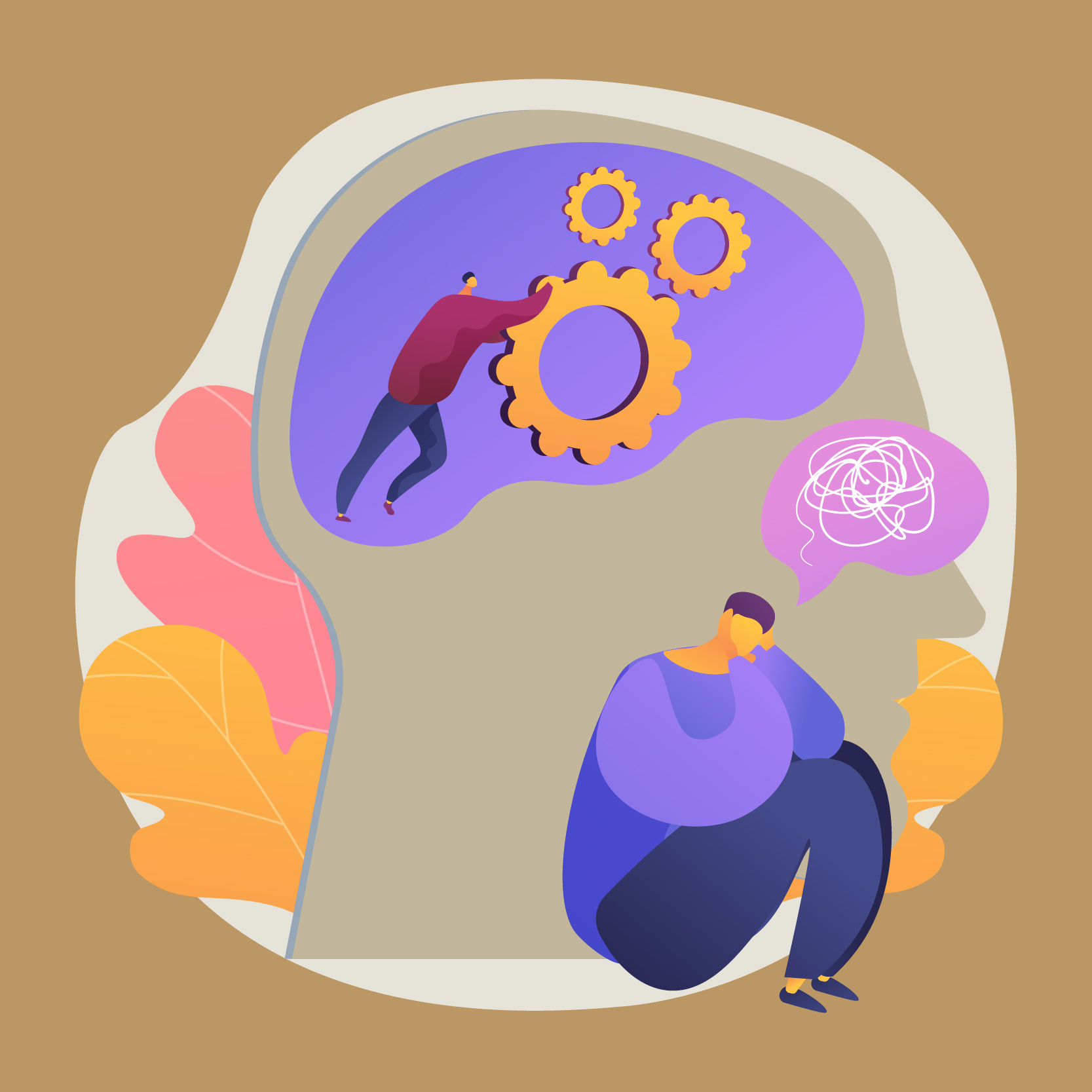Attachment Issues in Relationships

Understanding attachment issues in relationships is crucial for navigating their complex dynamics. Whether it's the fear of abandonment, difficulty in trusting others, or patterns of emotional detachment, attachment issues can profoundly impact our connections with others.
Understanding Attachment Anxiety and How Attachment Style Can Impact Relationships
Attachment theory is a theory that explains how childhood bonds influence us as adults in our couple relationships. It explains why we react to conflict in the ways that we do, and how this can differ so vastly between individuals.
Our personal attachment styles are determined at a young age — literally within the first 12-18 months of life! Our attachment type, born from our early infancy experiences, can shape many facets of our adult lives.
Understanding your own attachment style is so important. For many of us, it is the key to healthier relationships and a deeper understanding of ourselves. Understanding our personal attachment style can help us avoid heartbreak and recognize and break toxic relationship patterns.
Attachment Theory
Research into attachment theory was initiated by psychoanalyst John Bowlby. He studied the emotional bonds a young child forms with their parents and how they influence us as adults. His research revealed that early attachments significantly impact a person's social and emotional development.
Psychologist Mary Ainsworth furthered his research and determined that there are four main attachment styles. These styles explain why some people tend to be more confident and trusting in relationships, while others may exhibit varying degrees of insecurity and/or difficulty in forming and maintaining connections.
Attachment theory informs our understanding of how childhood experiences influence adult relationships, behavior, and emotional well-being. It highlights the importance of nurturing caregiver-child relationships for healthy development.
What are the four attachment styles?
The four attachment styles are secure attachment, anxious attachment, avoidant attachment, and disorganized attachment.
Let's unpack each of them.
Secure Attachment Style

First off, we have secure attachment style. 60% of the population has this attachment style, making this the majority of people in our society.
Infants develop secure attachments when their parents are attentive to their needs. They hence develop internal security. They feel safe to explore their environment whilst also relying on their parents for safety and soothing when needed. When a child is assured of their safety because they trust that a parent is there for them, their attention is focused on productive activities that build resilience. They use their time and efforts for growth, since their brain is in a state that positions them for this experience.
People with secure attachment tend to enjoy healthier, more fulfilling relationships with a strong respect for their partners and their own personal boundaries. They are better with things like trust, honesty, and mutual respect. This leads to more stable relationships and better communication between both partners.
Anxious Attachment Style
Anxious attachment is the first insecure attachment style. Individuals with an anxious attachment style frequently need constant reassurance from their partners due to an underlying fear of abandonment. They hold tightly, yearn for closeness, yet are unable to entirely dispel the haunting apprehension of their partner's departure.
Like secure attachment, people with an anxious attachment style find that their relationship anxieties originate from early infancy. The main difference is that a person with a secure attachment style had parents who were attentive to their needs, whilst an individual with anxious attachment has experienced caregivers who were not fully attentive to their needs. This does not mean the parents were abusive or neglectful — simply that they were less attuned to the needs of their child, or less capable of meeting those needs. These children experience inconsistent emotional support from a primary caregiver, even if there is lots of love and care in the dynamic.
People with an anxious attachment tend to fear that their romantic partner will leave them. Hence, they constantly seek reassurance in their romantic relationship. When they don't get it, this causes significant distress and can impact their self-worth, and causes attachment issues in relationships. These individuals tend to struggle with self-inquiry, often intertwining their identity within their relationship, viewing each perceived threat to the relationship as a threat to their very self. People with an anxious attachment style tend to attempt to 'cling,' to their partner, even when this clinginess ends up having an effect that is opposite to the desired one.
This intense emotional dynamic can be draining not only for the person with anxious attachment but also for their partner. Their need for reassurance can become overwhelming and create instability in the relationship.
Avoidant Attachment Style
Avoidant attachment represents the second insecure attachment style.
Individuals with avoidant attachment typically crave privacy and independence above intimacy. They tend to become exceedingly self-reliant and harbor a deep-seated fear of dependence on others. This fear of vulnerability roots in early experiences where their primary caregiver failed to consistently meet their emotional needs.
People with avoidant attachments may project an image of outward independence driven by an intense fear of depending on others. Because of this, those with this attachment style overly detach themselves from their partner's feelings and needs, evading closeness and emotional connection for the sake of self-preservation.
Disorganized Attachment Style
Lastly, we have our final type of insecure attachment: disorganized attachment. Approximately 15% of children develop a disorganized attachment style.
Children with this attachment style have experienced a series of micro-moments where their parent was unavailable, unprotective, or unsafe for them to be around. As a dependent infant, this highly distressing experience wires them differently to those in the other categories of insecure attachment. Many of these children have experienced complex trauma, neglect, or abuse.
Unlike the anxiously attached individuals who attempt to cling to their partner and the avoidantly attached individuals who attempt to be overly independent, these individuals have no strategy to use to create safety.
This attachment style creates unresolved trauma that rears its ugly head in adult romantic relationships. These adults don't have a strategy to manage difficult feelings as they arise. They are prone to feelings of confusion, dissociation, anger, shouting, and disintegration. They struggle to see safety in their partner and experience deep emotional pain and distress.
The Role of the Primary Caregiver in Attachment Issues in Relationships

When unpacking the four attachment types, it becomes clear that our first essential relationship (that is, the one with a parent or guardian) acts as a prototype for future relationships by setting a precedent for what is expected in terms of love and affection.
Attachment style can impact your self-esteem, self-worth, and capacity to form a secure relationship. A child who feels secure and cherished in their connection with their primary caregiver is more likely to develop a secure attachment, foster healthy boundaries, and feel comfortable expressing their emotions. They are secure in themselves and their relationships because their caregiver has been responsive and supportive.
On the other hand, a child who has less attentive parenting from their primary caregiver, or in some circumstances experiences actual abuse and emotional neglect, develops an insecure attachment style that manifests later in life. Their relationships tend to feel less stable and emotionally secure.
To put it simply, your early relationship with your primary caregiver/s is the main factor that determines your attachment style. This then gets revealed in adult attachment type and adult relationships.
Can a person have multiple attachment styles?

Most of us don't fit neatly into one specific category for attachment style — meaning that, yes, we can and often do have multiple attachment styles. That being said, you may resonate with one category more than another. The four main styles can be used as an insightful tool to interrogate our psyche and generate increased self-awareness.
They also help us put a lens up to our partner and understand why they act in the ways that they do, particularly when things get hard. Do they exhibit anxious behaviors that are linked to their attachment?
They also help us put a lens to ourselves within a relationship context. You can then ask questions such as:
-
Do you feel anxious or feel secure in your relationship dynamic?
-
Do you feel your partner is overly sensitive, or fear your partner leaving?
-
Do you have appropriate boundaries with one another?
-
Do you feel uncomfortable sharing your emotions with them?
These are all valuable questions that you can begin to ask when examining your relationship through the lens of attachment theory.
Research suggests that most of us experience a mix of different attachment types, and certain traits from different types of attachment will be more prominent during different parts of your life. That being said, anyone has the capacity to develop a more secure attachment style overall.
How do attachment styles impact intimate relationships?

Each of the four attachment types substantially impacts our relationships and the dynamics that play out within them.
If two securely attached individuals are together, the individuals are going to be better prepared for a stable relationship, with a good level of both self-reliance and reliance on their partner. This is linked to improved mental health outcomes in the relationship.
When one secure and one insecurely attached person are together, the insecurely attached person is more likely to convert to a more secure attachment, simply by being with someone who has secure attachment.
When two insecurely attached people are together, a great deal of trauma can present itself through the relationship dynamics. For example, when an anxiously attached person pairs up with an avoidantly attached person, the need for constant reassurance by the anxious person clashes with the avoidant partner's sensitivity to becoming too close. The result when these insecure attachment styles get together can be a turbulent, emotionally neglected relationship often marked by a lack of understanding. The anxious partner views the dynamic through the lens of abandonment and rejection, even where none may exist.
This habit of overthinking relationship anxieties fuels a cycle of self-perpetuated distress, often leading to the manifestation of the very fears they're desperately trying to avoid.
Attachment style greatly impacts couples and can be a key factor in creating a healthy relationship, or a tumultuous one. That being said, even two securely attached people will run into trouble at times in their relationship — after all, we are only human and none of us are perfect.
With help, everybody can work towards achieving secure relationships, regardless of the attachment developed in their formative years.
Can a person change their attachment style?

Our early childhood experiences with our primary caregiver can leave a lasting imprint on our adult attachments.
But luckily for us, there are many ways to move your attachment style towards a secure one. This can be done with the help of professionals, or by attracting securely attached people into your life. Regardless of your attachment, intention is the first step to creating meaningful change.
To conclude...

Understanding attachment theory is the first step towards fostering healthier, more fulfilling relationships. It allows for self-reflection, broadening your understanding of not just your behaviors but also your partners. For example, a person with anxious attachment style may be able to challenge their fear of abandonment in adulthood, and in doing this will start to change their adult attachment styles. Someone with an avoidant attachment style may learn to rely more on others upon realizing why they value their independence so deeply.
So many challenges for romantic partners can be traced back to attachment type, and the interplay of your different attachments. By understanding the root cause, you can begin to understand what you are deserving of in a relationship, and how to break cycles of recurring conflict.



